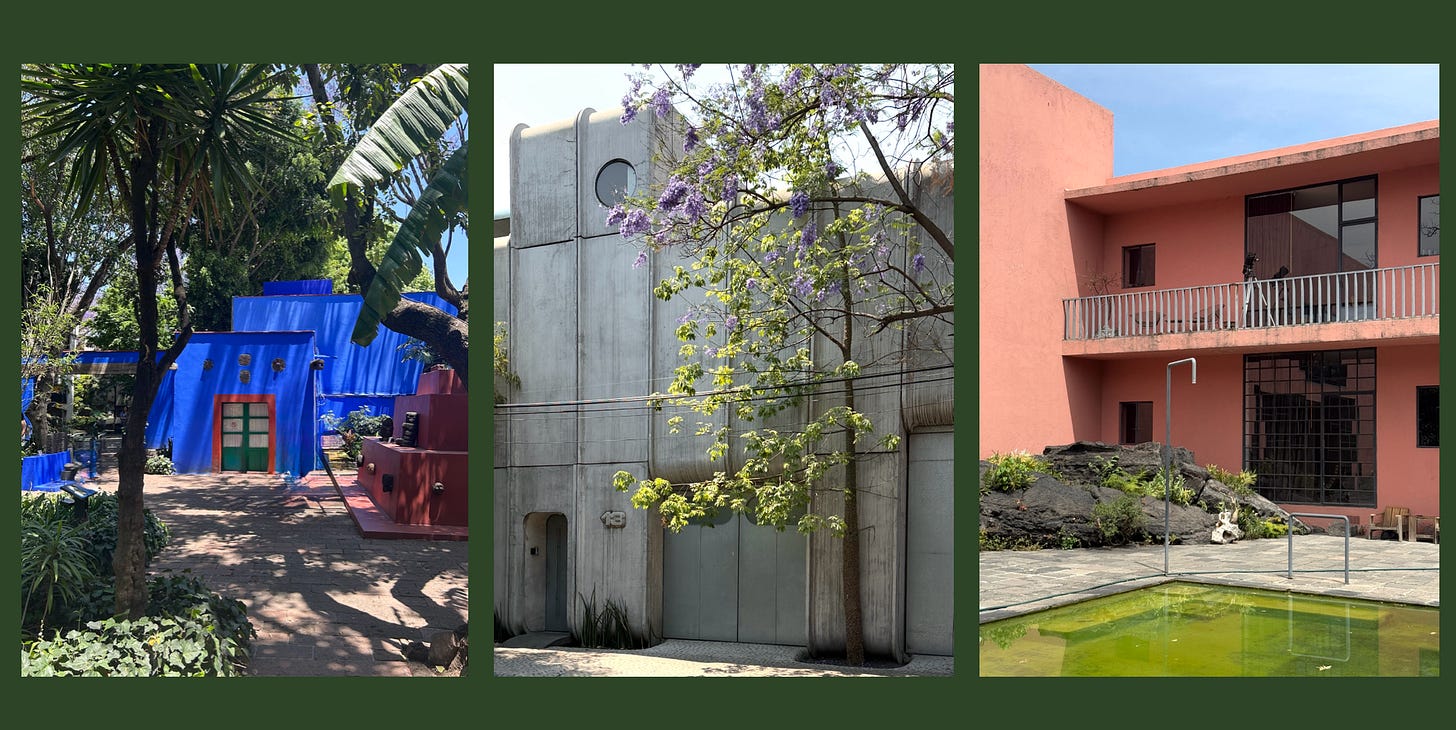One city, three houses
From the traditional blues and yellows of Frida Kahlo's home to the monochrome concrete of sculptor Pedro Reyes' studio – via Luis Barragan's pink Modernist masterpiece... Come with me to Mexico City.
During our recent visit to Mexico City we were lucky to be able to visit three very different houses that are all completely entwined with their designers and firmly rooted in their neighbourhoods – each a snapshot of the city’s design motifs. La Casa Azul (the blue house), home to Frida Kahlo and her husband Diego Rivera, is full of traditional Mexican motifs and bright colours; the pink Modernist house by Luis Barragan is built directly on to volcanic rock, with the colour of the pool designed to match the plants growing on the gnarled lava, while the 21st-Century concrete home and studio of Pedro Reyes, whose preferred media are rock and stone, reflects both his monumental designs and a dynamic, modern city.
Fancy a look inside all three? The blue house is open to all, but you must book well in advance. Casa Pedregal is a private house that has been fully restored to the original Barragan vision (after the previous owners grassed over the garden and turned it into a mini-golf course) but guided tours are available (again, book well in advance) while Pedro’s studio home is not open to the public (but our son is interning there, so you get to come with me).
Let’s take the oldest first: LA CASA AZUL
Frida grew up here and also lived here with her husband (they married twice) the muralist Diego Rivera, whose work can be seen all over the city. Leon Trotsky, who lived a few streets away, was a regular visitor and the pair had a brief but passionate affair (following Diego’s serial unfaithfulness).
The house is full of traditional Mexican art collected by the couple, but there are also glimpses of Frida’s own work. There is also currently an exhibition of her clothes, discovered in a room next to her bathroom a few years ago.
Following her death in 1954, everything was locked away for 50 years in accordance with the wishes of her husband and Dolores Olmedo, a friend and patron of Rivera. It wasn’t until 2004 that the trunks were unlocked and a collection of clothes, textiles, jewellery and letters was uncovered. The museum embarked on a restoration programme and some 200 pieces were then loaned to the V&A in London for a major exhibition in 2018.






